How My Walk on The Beach Will Influence National Trade Policy (tis true!)
ACAP Saint John is a great example of how giving power back to people can help solve big, complex issues where the environment and economy merge
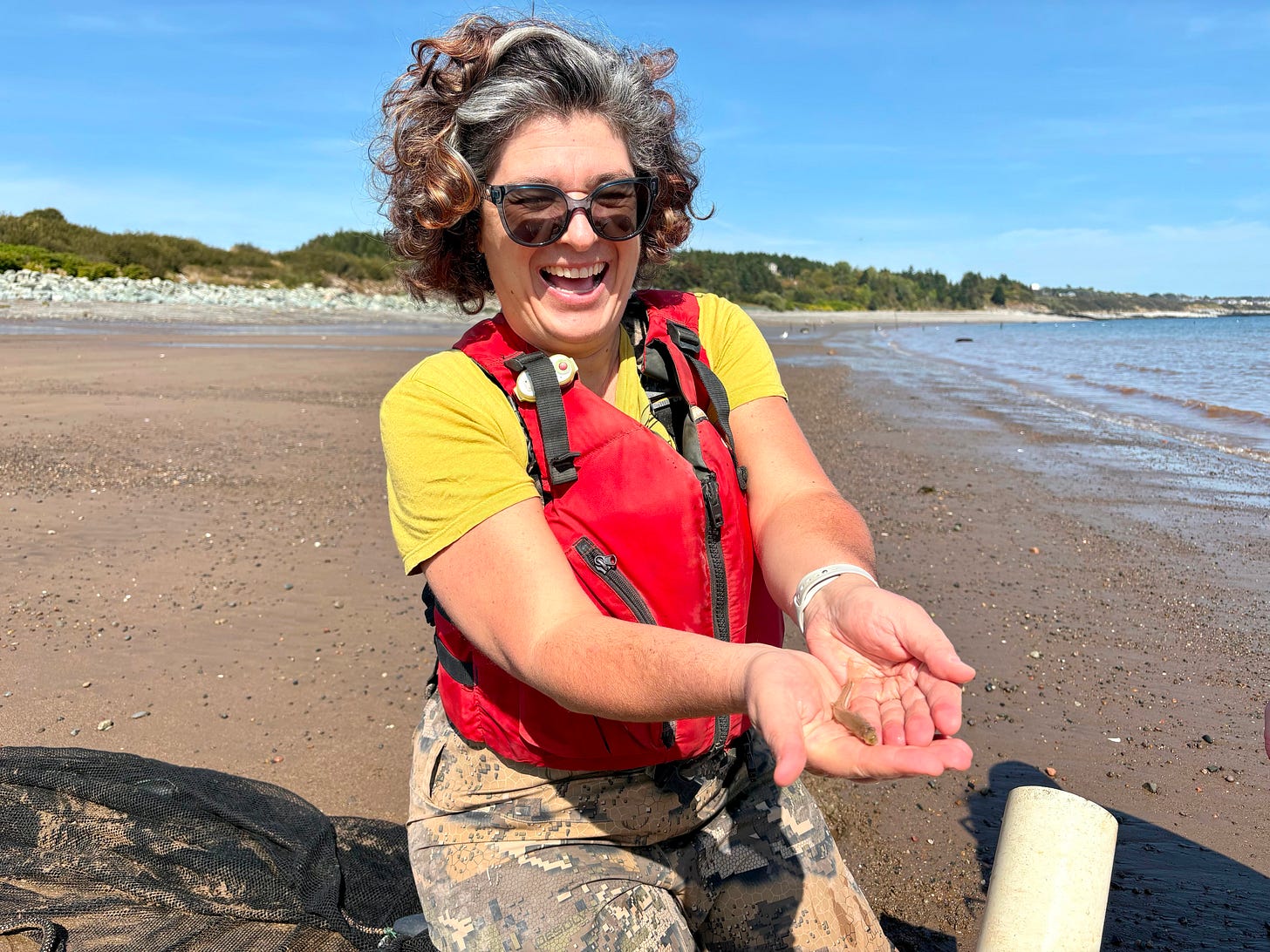
Clarification: I inadvertently wrote that this is a weekly monitoring program in the version that went out via email. We monitor each site once/month, not weekly. I’ve corrected it here on the site.
McLarens Beach is one of those places only locals go.
The small, secluded beach lies just below the Holy Cross Cemetery on Saint John’s West Side, down a barely marked drive that’s easy to miss.
Smaller than nearby Saints Rest, the expansive beachfront that delineates the entrance to Irving Nature Park, McLarens Beach is cozy by Bay of Fundy standards; a crescent of pebbly sand, driftwood and a long scribble of dried seaweed along the high-water mark.
However, there was no time for a leisurely walk on the day I was there, a couple of weeks ago on a sunny early autumn afternoon.
I was there to work.
In short sleeves and hip waders, I trudged after Roxanne MacKinnon into waist-high water, hauling a net behind us.
We were here to count creatures.
Roxanne is the executive director of the Atlantic Coastal Action Program in Saint John, known to most as ACAP Saint John, and I, as of this summer, its board chair.
I joined the board a few years ago because I wanted to know more about the region’s ecology after writing about its unique tidal zone in my 2018 book, New Brunswick Underwater.
That’s what ACAPs do.
The program was created in 1991 by Prime Minister Brian Mulroney’s Progressive Conservative government as a bottom-up, community-led model for environmental restoration, funding the creation of organizations in 12 East Coast communities.
Their purpose is to address big issues through local action – in this case, environmental degradation caused by pollution, habitat loss, and, in more recent years, our changing climate.
The journalist in me wanted to see this in action, so I asked Roxanne if I could tag along for an afternoon of field work, which is how I came to be wading against the tide, dragging a seine net on the ocean floor.

Working a seine net is a two-person job. Each person holds an end, slowly pulling the net, which have small weights attached.
The net ‘sweeps’ up aquatic life, which we then pull to shore. Roxanne and ACAP office manager and occasional field technician Tina Lemieux transferred our catch to an aerated bucket of seawater to then measure and note our catch before returning all of them to the bay.
We’d caught a few dozen translucent Atlantic silversides, a schooling bait fish that are a favoured food for larger fish such as pollock and haddock, and a handful of miniscule sand shrimp.
Each month, from May to October, Roxanne and the ACAP team are out with hip waders, clipboards and rulers measuring and noting the sea life that lives in the shallow waters of the Bay of Fundy and in the brackish waters of Wolostoq/St. John River.
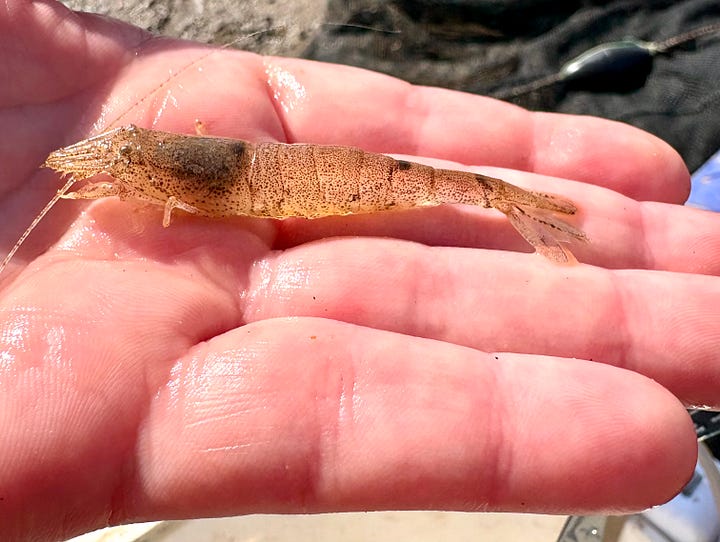
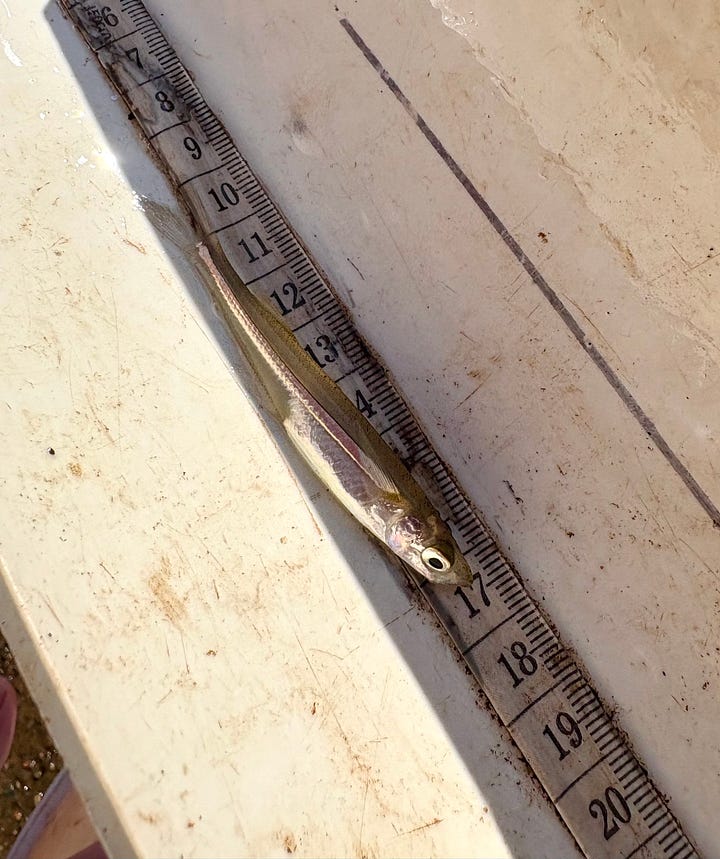
This particular project, one of the many ACAP does each year, is part of the federal Department of Fisheries and Oceans’ Coastal Environmental Baseline Program (CEBP), which, since October 2018, has collected baseline data on water quality, fish communities and sediment contamination for the lower Bay of Fundy, which is the area from Saint John to Passamaquoddy Bay.
In addition to McLarens Beach, ACAP Saint John monitors biotic life (fish and crustaceans) at seven other sites in and around Saint John Harbour, checking each site once/month.
Fellow non-profits Eastern Charlotte Waterways monitors in and around St. George and Passamaquoddy Recognition Group (PRGI) monitors Passamoquoddy Bay.
The cumulative work of these community-based environmental research projects has national implications, particularly now, as governments and businesses race to reorient Canada’s economy away from the U.S.
The data collected in the shallow waters of McLarens Beach informs management plans for the Bay of Fundy, particularly ship and tanker traffic.
As the number and size of ships travelling through the Bay of Fundy increase, all that traffic will alter marine life, including increasing underwater noise pollution.
Counting fish and crustaceans for six months each year, over 10 years will show us the pattern of life beneath the Bay.
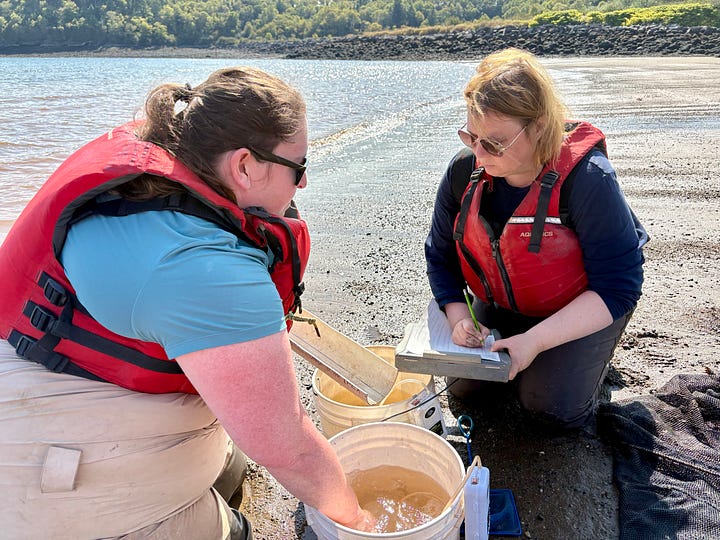
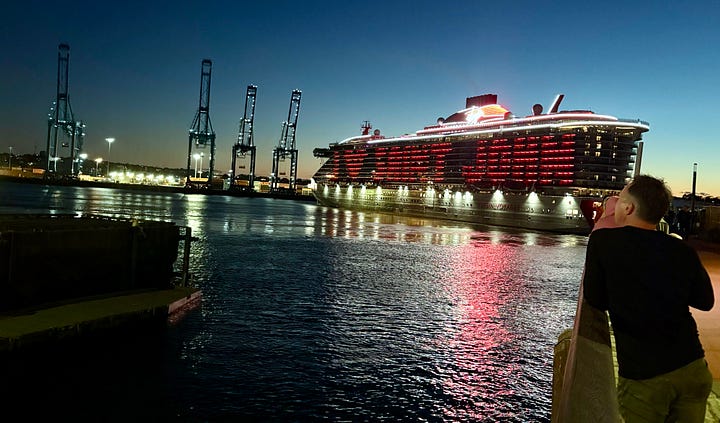
Community-led research that informs national policy; we need more of that these days.
Later this week I’ll be at a conference in Moncton considering the value of community initiatives in helping to solve massive, complex economic, technological, social and environmental issues.
Hosted by the Organisation for Economic Co-operation and Development (OECD), the conference will feature place-based economic initiatives from across Canada, Ireland, Scotland, Sweden, France and Mexico.
While I’m sitting in the Hotel Beauséjour listening and learning, Roxanne and her team will be out doing the work, practising place-based environmental monitoring for the Bay of Fundy.
Of the initial 12 ACAP organizations, most are still going strong.
In Newfoundland and Labrador there’s Humber Arm Environmental Association in Corner Brook; and the Aquatic Conservation Initiative, a province-wide organization that continues the work of the original ACAPs that served Labrador and the Avalon Peninsula.
Nova Scotia has the Bluenose Coastal Action Foundation in Mahone Bay, N.S.; Clean Annapolis River Project in Annapolis Royal; and ACAP Cape Breton in Sydney.
The Sable Island Preservation Trust was also part of the ACAP initiative, but the science station has since reverted back to the federal government.
PEI has the Southeast Environmental Association in Montague and the Bedeque Bay Environmental Management Association in Bedeque.
While here in New Brunswick, there’s the St. Croix Estuary Project, which owns and manages Ganong Nature Park in St. Stephen; Société d’aménagement de la Rivière Madawaska in St. Basile; the Miramichi River Environmental Management Association; Eastern Charlotte Waterways in St. George, and ACAP Saint John.
A network of community-run environmental science non-profits monitoring the health of Canada’s East Coast, for everyone, near and far.
Side Walks is fully funded by readers and organizations that support our mission to produce Canadian news and cultural commentary. If you’re enjoying this story, please consider becoming a paid subscriber, $8/month or $80/year. You can also sign up for a free subscription. All subscriptions deliver Side Walks directly to your email inbox, and you can also read along on the Substack app.
If you enjoyed this column, please share the love with others who you think would enjoy the conversation we’re having on Side Walks. We’re building a community interested in finding common ground around complex issues by focusing on local repercussions and opportunities caused by national and global issues. Cheers!
Stroll Over to Side Walks For More Stories
News & Analysis
Province on Fire: Northumberland County, home to New Brunswick’s forestry sector, is fighting back the flames.
The East Coast’s Decades-long Pipe Dream: Could a pipeline into Northern New Brunswick help solve the region’s slow-moving energy crisis?
Street Smarts: Small talk and the flavours of the neighbourhood.
How to Build Fair While Moving Fast: A decade-old New Brunswick model offers a way to align development with Indigenous, environmental, and economic priorities.
Community Wealth and Health Should Be the Focus for Regulatory Approval of New Development Projects: That’s the answer when local residents ask why they should take on environmental risk and community disruptions caused by increased traffic and other annoyances when industry comes to town.
Culture
Affirmation Across the Generations: ‘Lilith Fair: Building a Mystery’ by Canadian filmmaker Ally Pankiw is a rallying call for change, inspired by Sarah McLachlan and her successful all-women music festival.
Review: Uiksaringitara (Wrong Husband): TIFF’s 2025 Best Canadian Feature award-winner from acclaimed Inuit filmmaker Zacharias Kunuk returns with a film about promises, love and northern spirits.
Review: You Had to Be There: How the Toronto Godspell Ignited the Comedy Revolution, Spread Love & Overalls, and Created a Community That Changed the World (In a Canadian Kind of Way): Nick Davis spins an affectionate story about a group of friends who changed the comedy world
Review: Sk+te’kmujue’katik (In the Place of Ghosts): L’nu (Mik’maw) filmmaker Bretten Hannam confronts the spiritual scars we carry in haunting new film.
Side Walks Home Page
Catch up on all our stories at www.sidewalksmedia.ca.


